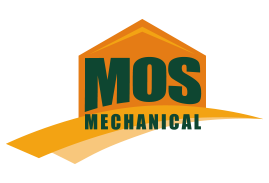Heat Recovery Ventilation (HRV)
Without a good ventilation system, your home can fall victim to several problems. Any moisture in the air can form condensation, encouraging the growth of mould. Subsequently, dust mites tend to flourish in damp conditions, and this can lead to an increase in dust-related allergies or asthma. Mechanical Heat Recovery Ventilation provides an ideal ventilation solution, and the technology couldn’t be more straightforward. Typically, the units are kept in an accessible space- ie. Utility room. Fresh air from the outside is supplied to the habitable rooms, while stale humid air is extracted from the ‘wet’ rooms. This system requires ducting and air diffusers to be fitted. If you insulate your building to high standards, install good quality double glazing and low heat loss glass, make the building airtight and do everything possible to help reduce the cost of heating your home; don’t you think it’s crazy to drill 2 x 6″ holes in the wall of each room in order to provide ventilation? Depending on the wind direction, you may be losing excessive heat or not ventilating your home at all. By installing heat recovery ventilation systems, you can block up those 6″ holes and lets fans gently and constantly ventilate the house, while extracting any usefully heat from the exhaust air from kitchens and bathrooms.
Demand control ventilation (DCV)
This system measures the quality of air in your home and adjusts the air exchange minute by minute, room by room, based on your actual needs. Demand Control Ventilation uses humidity as an indicator of air quality. Humidity levels increase as we breath, wash and cook in our homes. A central extract fan is located typically in an attic or utility room. This fan runs quietly 24/7. The fan is ducted to the wet rooms such as Kitchens & bathrooms. Extract grills in the ceiling adjust depending on the humidity level to determine the amount of air extracted from each room. Fresh air is then drawn into the house through wall vents located in the bedrooms & living areas. These vents open & close depending on the ventilation requirement. No electrical connections or ducting is required for the inlets.
DCV removes the old air from your home and circulates fresh air in a draft free way. The results leave the building with clean air with minimal heat loss. If a room get a lot of use the DCV unit ensures good ventilation. If a room is not occupied the DCV automatically reduces the air flow. By intelligently ventilating a house a DCV unit reduces the amount of air that needs to be heated so this saves on heating costs. Another advantage of a DCV is that condensation build up and the potential for mould-growing conditions are avoided.
DCV systems are automatic. As a result, no user interaction is required. Filters for this type of unit are also not required.
DCVs will also work for Retrofits. The living conditions inside many homes in Ireland are too humid, with careful sealing around windows, doors and vents, and installation of new glazing, uncontrolled air-changes can be greatly reduced. However, with effective air tightness it is vital to ensure sufficient fresh air. Our standard ventilation method of holes in the walls and some additional fans in bathrooms is unlikely to be successful at ensuring high indoor air quality. DCV systems are easily installed in a retrofit. The DCV fans inlets can be slotted into standard ventilation holes, replacing internal and external vent covers. The DCV fans can be installed in roof spaces or utility rooms.
